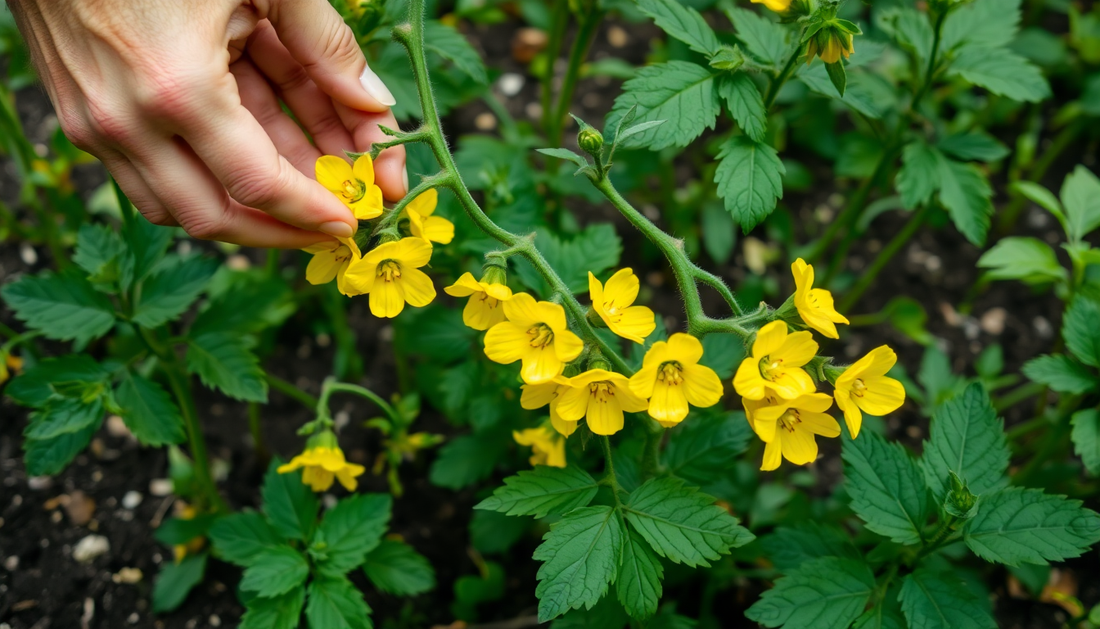
Why Are My Tomato Plants Growing Flowers But No Fruit?
As a passionate gardener, I've encountered my fair share of challenges when it comes to growing tomatoes. One of the most common issues I've come across is the frustrating scenario where my tomato plants are producing an abundance of flowers, but no actual fruit. This can be incredibly disheartening, especially for those of us who eagerly anticipate the juicy, flavorful tomatoes we hope to harvest.
In this blog post, I'll delve into the reasons why your tomato plants may be flowering without setting fruit, and provide you with practical solutions to help you overcome this problem. By the end, you'll have a better understanding of the underlying causes and the steps you can take to ensure a bountiful tomato harvest.
Understanding Tomato Pollination
Tomato plants require successful pollination in order to set fruit. This process involves the transfer of pollen from the male parts of the flower (the stamens) to the female parts (the pistil). Once pollination occurs, the flower can then develop into a mature tomato.
There are a few key factors that can influence the pollination process:
Temperature
Tomato plants thrive in warm, sunny conditions, but they can be sensitive to temperature extremes. Temperatures that are too hot or too cold can disrupt the pollination process, leading to a lack of fruit set.
Humidity
Ideal humidity levels for tomato plants are typically between 60-80%. Excessively dry or humid conditions can interfere with pollen production and transfer, hindering pollination.
Wind
Gentle breezes can help facilitate the movement of pollen from the stamens to the pistil. However, strong winds can actually blow the pollen away, preventing successful pollination.
Pollinator Activity
Bees, butterflies, and other insects play a crucial role in tomato pollination. If there is a lack of pollinator activity in your garden, it can result in poor fruit set.
Reasons for Tomato Flowers Without Fruit
Now that we've covered the basics of tomato pollination, let's explore the common reasons why your tomato plants may be producing flowers but not setting fruit.
Environmental Stress
As mentioned earlier, temperature and humidity extremes can disrupt the pollination process. If your tomato plants are exposed to prolonged periods of high heat, cold snaps, or very dry or humid conditions, it can prevent the flowers from setting fruit.
Nutrient Imbalance
Tomato plants require a delicate balance of nutrients to thrive. An excess or deficiency of certain nutrients, such as nitrogen, phosphorus, or potassium, can lead to an abundance of foliage growth and flower production, but a lack of fruit set.
Improper Pruning
Excessive pruning or the removal of too many leaves can also contribute to the issue of tomato flowers without fruit. Leaves play a crucial role in providing the plant with the energy it needs to support fruit production.
Pest or Disease Infestations
Certain pests, such as aphids or thrips, can interfere with pollination by disrupting the flower structure or reducing the activity of pollinators. Similarly, diseases like early blight or Septoria leaf spot can weaken the plant, leading to poor fruit set.
Genetic Factors
In some cases, the issue of tomato flowers without fruit may be due to the plant's genetic makeup. Some tomato varieties are simply more prone to this problem than others, and it's important to choose cultivars that are well-suited to your growing conditions.
Solutions to Increase Tomato Fruit Set
Now that we've identified the potential causes of your tomato flowering without fruit, let's explore the solutions to help you overcome this challenge and enjoy a bountiful harvest.
Optimize Growing Conditions
Ensure that your tomato plants are growing in the ideal temperature range, typically between 70-85°F (21-29°C) during the day and 60-70°F (15-21°C) at night. Maintain consistent soil moisture and humidity levels, and consider using row covers or shade cloth to protect your plants from extreme weather conditions.
Provide Balanced Nutrition
Conduct a soil test to determine the nutrient levels in your garden and make any necessary adjustments. Apply a balanced, slow-release fertilizer or compost to ensure your tomato plants are receiving the right mix of nutrients for optimal growth and fruit production.
Prune Judiciously
Avoid excessive pruning, and focus on removing only the suckers (side shoots) that emerge from the main stem. This will help maintain a healthy balance of foliage and support fruit development.
Encourage Pollinator Activity
Attract more pollinators to your garden by planting a diverse array of flowering plants that bloom at different times. You can also consider hand-pollinating your tomato flowers using a small paintbrush or electric toothbrush to transfer pollen.
Manage Pests and Diseases
Regularly inspect your tomato plants for signs of pests or diseases, and take appropriate action to address any issues. This may involve the use of organic pest control methods or the application of fungicides, if necessary.
Choose the Right Tomato Varieties
Research and select tomato cultivars that are known to be well-suited to your local climate and growing conditions. Look for varieties that are specifically bred to be more resistant to common pollination issues.
By implementing these solutions, you'll be well on your way to addressing the problem of tomato flowers without fruit and enjoying a bountiful harvest of juicy, flavorful tomatoes.
Remember, gardening is a journey, and every season brings new challenges and opportunities to learn. With patience, persistence, and a willingness to experiment, you can overcome the obstacles and create a thriving tomato garden that will delight your taste buds and nourish your soul.
Happy gardening!







No comments